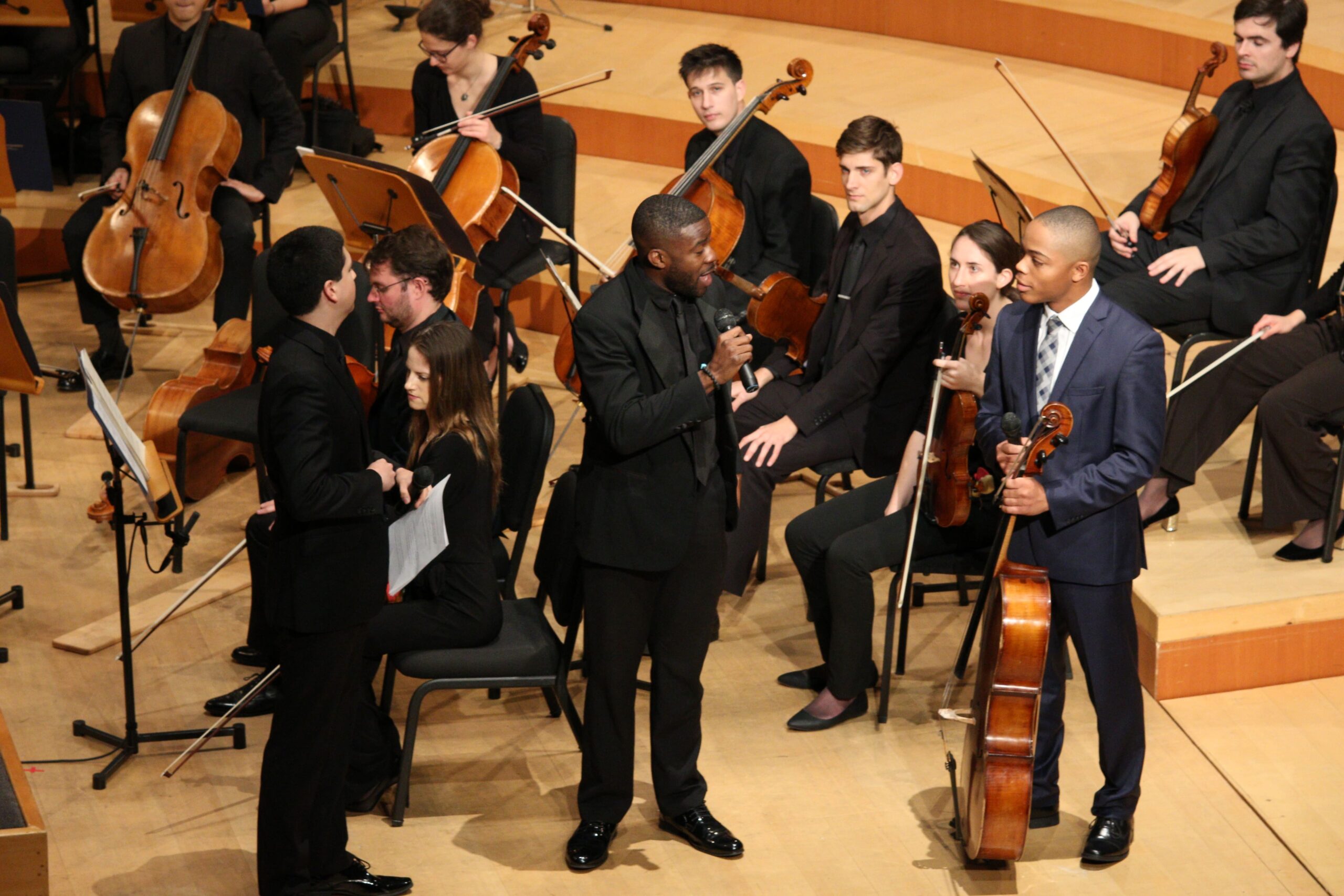Air Drawing: Feeling

Goals
Audience will understand the connection between music and motion. Audience will get a kinetic feel for how musical elements might influence the mood or feeling of a piece. Alternatively, get a kinetic feel for the connection between music and visual arts.
Overview
Audience draws the emotion of a piece in the air along with a performance.
Process
- Play a selection and ask the audience to draw in the air the type of paint brush strokes a composer might be using, or the motion they think matches the feeling of the piece.
Audience Type

What does this activity look like in action?
Example Script:
Piece: Greig – Peer Gynt “Morning Mood”
Performer: The next piece on the program inspires some really beautiful images. I can see vivid, warm colors, with the sun just starting to peek out over the horizon. As we play this next piece, I’d invite you to imagine you’re painting a beautiful picture that this music is depicting. What kind of paint brush strokes would you use? What is the emotion of the scene? Do you paint quickly, or is it calm and contemplative? Let’s get our imaginary paintbrushes ready (raise imaginary paintbrush), and let’s listen creatively to the performance!

Modifications
- Can be paired with/substituted for a drawing activity, where the audience draws a picture along to the performance (see “Scene Painting: Drawing Edition“).
- This exercise can also be used to talk about articulation. Is the music smooth and legato, inspiring a smooth sweeping pattern in your air drawing? Or is it short and jagged, inspiring a jerking, rough pattern in your air drawing?
Notes
- If the motion feels more natural as a walking activity, see “Finger Puppet.”
- Having props (like streamers or wands, etc.) handed out before a concert can be fun to pair with this activity!
Create interactive performances. We have activities to help you connect with your audiences.


